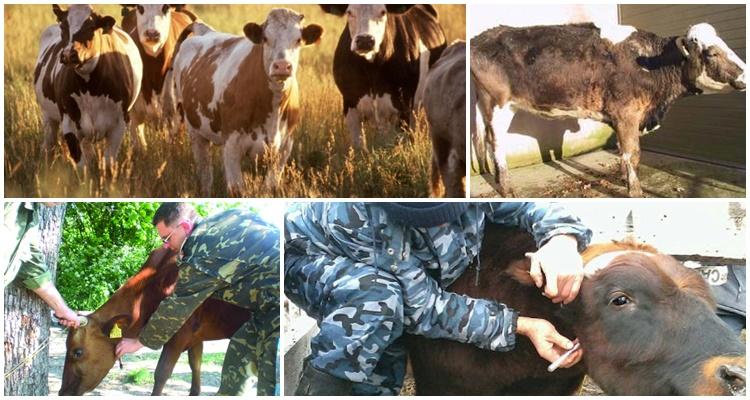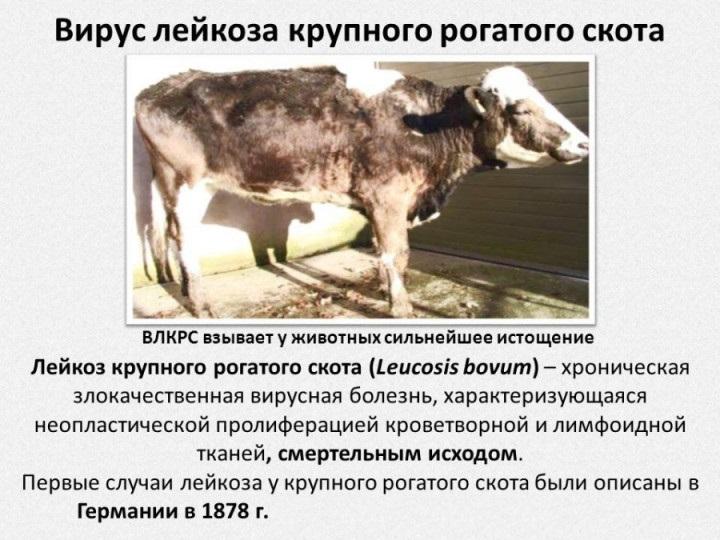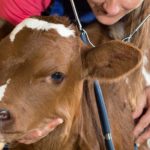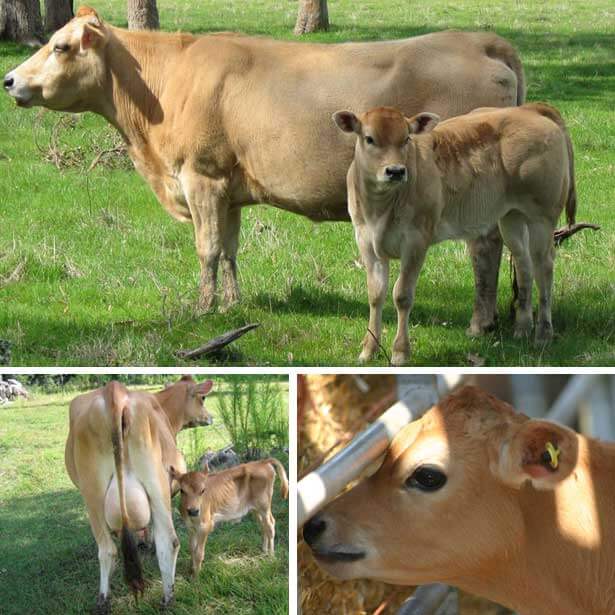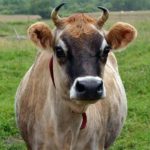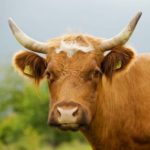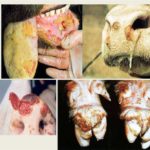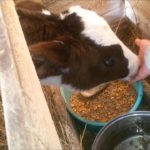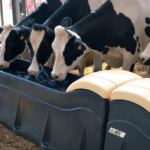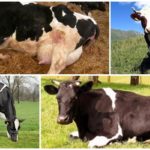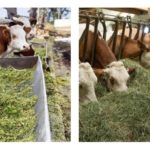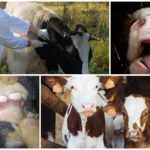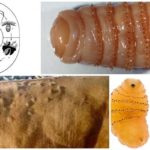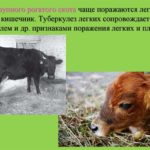Infectious diseases are common in dairy farming. Infectious agents can affect various organs, even the blood. Viral leukemia is a serious disease that can affect representatives of all breeds. Let's consider the causes of the appearance, stages and symptoms of bovine leukemia, diagnostic and therapeutic measures, and whether there is a danger of the disease for humans.
Causes of occurrence and how is the virus transmitted?
The causative agent of leukemia in cattle is bovine leukemia virus (BLV), of the family Retroviridae, which is morphologically similar to the virus that causes leukemia in other animal species. The virus is able to remain in a cell for a long time in a bound state with the genome, without showing activity. It is activated when metabolic processes and immunological defenses of the body deteriorate.
Leukemia (hemoblastosis, leukemia) is a tumor blood disease that can be asymptomatic. It is manifested by the proliferation of cells of the hematopoietic and lymph-forming organs, which then infiltrate into other organs, where tumors appear. They can form in the lymph nodes, spleen, heart, kidneys, abomasum, kidneys.
The virus is transmitted to cattle, buffaloes, zebu and sheep. The pathogen lives in the external environment for a short time, loses its infectious properties in 3-6 hours, and dies when exposed to common disinfectants. The virus persists in fresh milk for 18 days, but during pasteurization it dies in a few seconds.
Healthy animals become infected through blood and saliva during mating. Calves - through colostrum and milk, 10-20% are born already infected. The virus is believed to be carried by blood-sucking insects. Infection is facilitated by crowded housing, herd grazing on common grazing, feeding calves with the milk of sick cows, and using sick bulls for mating. Bovine leukosis is now considered as a disease that poses a danger to the gene pool of breeds and reduces the number of productive livestock.
Stages and symptoms
The course of the disease is divided into several stages, which are characterized by certain disorders and symptoms. Pathogenesis is determined by the interaction of the virus and the cell. Leukemia is characterized by a predominantly latent form.
The disease begins with the activation of a pathogen; activators can be various unfavorable external or internal factors.
Incubation
It may take 2 or more weeks from infection to the appearance of the first signs. The early stage of the disease is asymptomatic, the productivity and reproductive function of cows remains at the same level. At this time, the sick animal is already spreading the virus. A cow, despite the presence of a pathogen in the body, may never develop leukemia; the pathogens will remain in the body in a passive state, but will be transmitted to other animals with the patient’s secretions.
Hematological
At this stage, pathological changes begin to appear in the blood of infected animals, which flows through the vessels, and not just in the hematopoietic organs. In leukemic individuals, their condition worsens, they quickly get tired, digest food poorly, reduce milk yield, and lose weight.
Digestive disorders, weakening of the heart, jaundice or cyanosis of the mucous membranes are common.
Breathing becomes heavy, the animals' dewlap, abdomen, and udder swell, and urine flow is impaired. Superficial lymph nodes on the jaw, udder, near the ears, and above the knees enlarge. They are dense or slightly elastic, mobile and do not hurt.
Tumor
This stage is manifested by the cows becoming thin, their lymph nodes enlarged, and their eyes protruding. Such individuals of cattle often get sick, more often remain barren, there may be abortions, and the number of calves born decreases. Cow productivity is falling.
In young cows, tumors are found in the lower neck, thymus and skin. Due to a decrease in leukocytes and the appearance of pathological forms of cells in the peripheral blood, the immune system is quickly depleted, and the calves die.In calves, the disease is acute and may die within a few weeks of the onset of symptoms.
Diagnostic measures
In the early stages of the disease, leukemia in cattle is detected by enzyme immunoassay and polymer chain reaction. The diagnosis is made according to epizootological, virological, histological, hematological studies, as well as taking into account clinical signs. During a hematological study, the number of leukocytes, young cells and the number of lymphocytes is determined as a percentage. Auxiliary diagnostic methods are biopsy of lymph nodes, liver and spleen.
What to do if a cow has leukemia?
The disease is chronic and severe, which causes significant damage to the animal’s body, so it is not treated. The virus can integrate into the genes of a cell, and drugs have not yet been developed that can be used to remove it from there. There is no official therapy for the treatment of leukemia in cows, and there are no traditional methods.
When sick individuals are identified, they are separated from the herd and reared separately or immediately slaughtered. If there are more than 10% of such individuals, they are slaughtered, the rest are examined every 3 months. If there are many cases, the animals are slaughtered and replaced with new ones.
Possible complications and consequences for the animal
Cows with leukemia will die because no treatment has been developed. When this happens depends on the health of the animal and how long it can resist the disease.Carriers, if they do not get sick, can live for many years; the inactivated virus will not affect their health and productivity. It is not recommended to breed leukemia virus carriers.
Prevention
When purchasing new animals for the herd, you need to conduct a blood test and try to select individuals from disease-free farms. If the analysis determines that they are healthy, they can be introduced into the herd; infected ones can be sent for fattening. Such cows need to be kept separately from the rest and fed with immunostimulating supplements.
Calves born from leukemic cows should also be tested for the presence of the virus. If possible, equipment and milking machines should be used individually or at least disinfected before milking healthy animals. If there is no healthy bull in the herd, artificial insemination can be used. The room where the cows stood must be cleaned and disinfected with a 2-3% solution of caustic soda.
Is there a danger to humans?
The virus is not transmitted from cows to humans, and the disease does not develop. Therefore, you can work with animals without fear of infection. But there are sanitary requirements for milk and meat.
You can drink milk, but only after 5 minutes of boiling or pasteurization. When a certain temperature is reached, 2 tens of seconds are enough for the viruses in the milk to die. Milk can also be disinfected under ultraviolet radiation. However, the quality of milk remains low. It cannot be used to make yogurt, cheese, or dry it. It contains more protein and less dry matter than usual. The toxins produced by the virus remain in it.
Meat is unsuitable for consumption if internal organs and muscles are damaged.If the muscles are not affected by tumors, it is boiled before use or sent for processing into meat products.
Leukemia in cattle is an incurable disease; animals on any farm can get sick. The main way to prevent disease from spreading in a herd is through preventative measures. If a cow becomes infected and the disease begins to develop, she is doomed. After some time the animal will die. All that can be done is to put him on intensive fattening or slaughter him right away.
The economic damage from bovine leukemia is determined by the loss of funds due to forced slaughter of livestock, death of animals, and a decrease in milk and meat productivity. The volume of young animals sold is also decreasing. Today, leukemia is considered a disease that threatens the breeding gene pool of cattle breeds.

